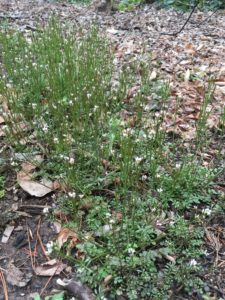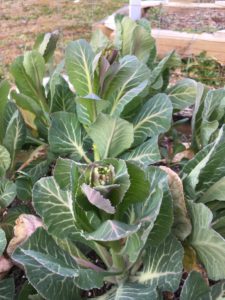Winter Weeds, Collard Greens and Peach Tree Information
go.ncsu.edu/readext?591018
en Español / em Português
El inglés es el idioma de control de esta página. En la medida en que haya algún conflicto entre la traducción al inglés y la traducción, el inglés prevalece.
Al hacer clic en el enlace de traducción se activa un servicio de traducción gratuito para convertir la página al español. Al igual que con cualquier traducción por Internet, la conversión no es sensible al contexto y puede que no traduzca el texto en su significado original. NC State Extension no garantiza la exactitud del texto traducido. Por favor, tenga en cuenta que algunas aplicaciones y/o servicios pueden no funcionar como se espera cuando se traducen.
Português
Inglês é o idioma de controle desta página. Na medida que haja algum conflito entre o texto original em Inglês e a tradução, o Inglês prevalece.
Ao clicar no link de tradução, um serviço gratuito de tradução será ativado para converter a página para o Português. Como em qualquer tradução pela internet, a conversão não é sensivel ao contexto e pode não ocorrer a tradução para o significado orginal. O serviço de Extensão da Carolina do Norte (NC State Extension) não garante a exatidão do texto traduzido. Por favor, observe que algumas funções ou serviços podem não funcionar como esperado após a tradução.
English
English is the controlling language of this page. To the extent there is any conflict between the English text and the translation, English controls.
Clicking on the translation link activates a free translation service to convert the page to Spanish. As with any Internet translation, the conversion is not context-sensitive and may not translate the text to its original meaning. NC State Extension does not guarantee the accuracy of the translated text. Please note that some applications and/or services may not function as expected when translated.
Collapse ▲Question: What can I do about these winter weeds?
Answer: In addition to daffodils and Lenten rose, winter annual weeds such as purple deadnettle, henbit, and chickweed, and annual bittercress are in full bloom.

Hairy bittercress is a winter annual that produces seed in 14-28 days after it begins flowering. When mature, the seeds are forcibly expelled, jumping up to 6′ away.
These early flowers provide nectar for bees becoming active. However, if they are taking over an area where you’d prefer not have them, it’s best to remove them before they set seed. This reduces the “seed rain” they leave, or number of seeds they contribute to the soil seedbank, and therefore, the number of weeds you will see in the future. It pays off to observe the adage: “One years’ seeding is seven years’ weeding.” When the winter annuals are present in small numbers, most can be easily hand-pulled for removal or spot-sprayed with a broadleaf herbicide like 2,4-D. They are likely present because they outcompeted the lawn in fall, or filled in bare spots where there was no grass to compete. The best weed control in lawn is the lawn itself. If there are bare spots or if grass is not healthy, this could be due to improper fertility or soil pH, compaction, poor drainage, or other reasons. The best way to prevent these weeds in the future is to ensure a good, healthy grass stand and apply a pre-emergence herbicide in the late summer (late August-mid September) to minimize their germination. For now, if weeds are out of control, consider it good forage for our pollinator allies. And if you find yourself with some time to pull weeds or spray, be sure to do so before they produce seed.
Question: My collard greens are sending up flowers. What should I do?
Some winter-hardy garden crops like collard greens and mustards have likely put on some new green growth and are starting to send up flowering tops as well. You may also see flowers emerging from unharvested turnips, radishes that overwinter, or kale.
After winter, they form flowers which, after pollination, will bear seed. When they begin flowering, or “bolting”, the leaves become smaller and a stalk emerges vertically with a central broccoli-looking structure at the top. These flowering tops are edible, and they are sweet and delicious. Think of them like broccolini or broccoli florets. To harvest, just snap the floret of 1.5-2.5 inches below the flower, and place directly into a bag or container for storage in the refrigerator. They rarely need washing because they do not grow close to the soil. The best time to harvest them for eating is when the flower buds are level with the uppermost leaves, or just above them, before the flowers open. One, they become fully elongated and flowers open, the stems toughen and are less sweet. Mustard flowers are yellow will be somewhat spicy, like mustard greens. Arugula flowers are white and peppery in flavor. They are great in soup or on pizza. Florets coming from waxy greens like collards or bok choy will be sweeter and are great for stir-fry, or in pasta or eggs.
If you wish to harvest seed from the winter greens in this plant family – the cabbage family or Brassicaceae – plan to save seed from at least 20 plants to maintain some genetic diversity in your population, and more is better. If you grow multiple types of winter greens in the cabbage family you will need to separate the species by at least 1/4 mile so that the seed remains true to variety. For home gardeners, therefore, it may make sense to only save seed from one type of green per year. You can still harvest the florets if you wish to save seed- harvest only once, and then allow the plant to set seed and dry on the plant slightly before harvesting the seed. Don’t save seed from these plants if they are hybrids (F1). Only open-pollinated seed will produce offspring that are true to type. However, their florets are still edible.
Question: Do I need to graft peaches, and which rootstock should I use?
Answer: It is recommended to graft peach trees onto rootstock, rather than plant a tree that has grown from a seed, for a number of reasons. First, if you plant a peach tree from the stone or seed from a peach you have eaten, you do not know if this variety is well-suited for our climate. In Caldwell County, we straddle the climatic edge of where peaches produce fruit reliably. Many peach varieties send out flower buds or flower ahead of our late frosts, so they are vulnerable to being frozen out when the temperature drops in late winter or early spring. This reduces or eliminates the fruit that will be formed during that season. Dr. Mike Parker, Tree Fruit Specialist with NC State University recommends planting two varieties in our area: Contender and China Pearl. These varieties have the best flavor and hardiness in our climate. Peach rootstocks actually lend cold hardiness to peach trees, so it is advisable to plant only grafted peaches in this area. Rootstocks can help peaches tolerate calcareous soils (those high in calcium) or wet soils. Some rootstocks also provide tolerance to root-knot nematodes, which are microscopic soil-borne worms that parasitize plant roots and stunt plant growth. These nematodes are more common in sandy soils, which are found in coastal areas, but also along river bottoms in our area. The recommended peach rootstocks for our non-sandy soils are Lovell and Harlford.
Of course, many people are thinking about pruning their fruit trees this time of year. If you’re looking for pruning or growing tips, NC State Extension’s tree fruit website has excellent resources on all things tree-fruit, including videos on pruning. With more questions about gardening, contact the N.C. Cooperative Extension, Caldwell County Center at 828-757-1290. We are located in the lower level of the Caldwell County Public Library in Lenoir and our office is open Monday-Friday, 8 a.m.–5 p.m.





